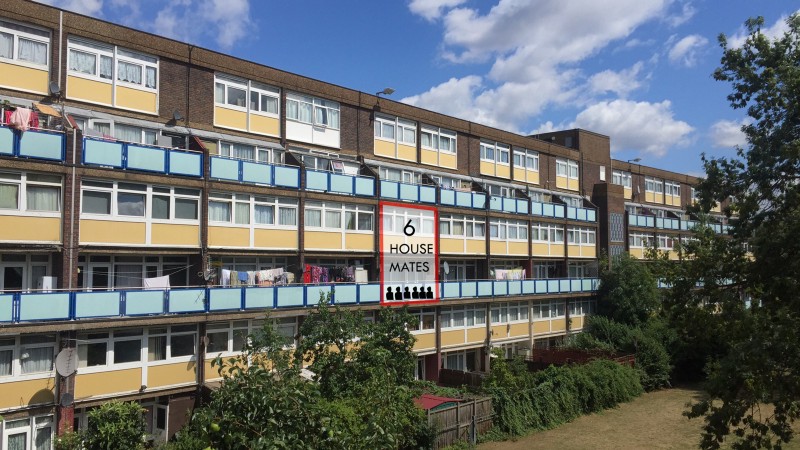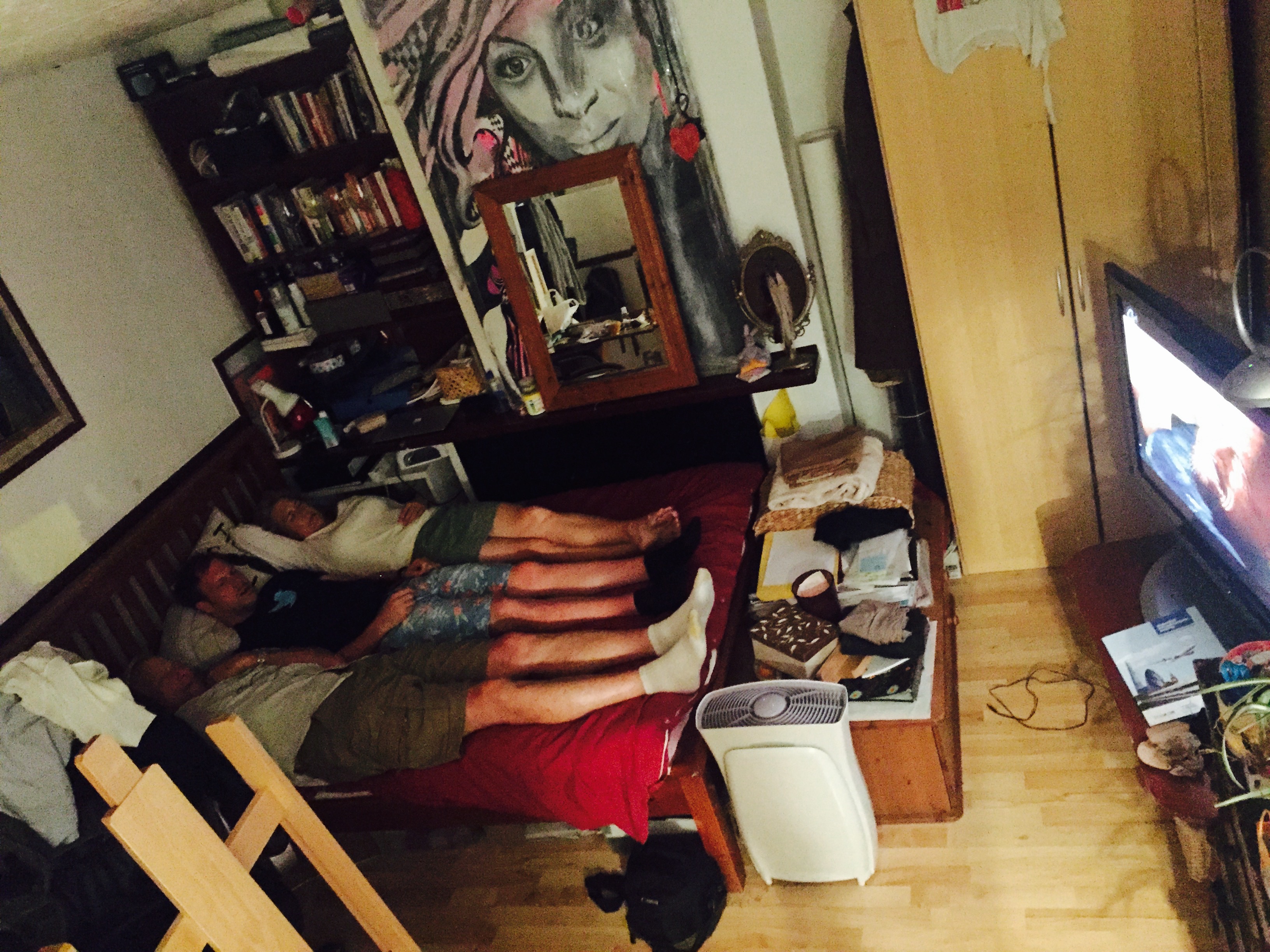Are you happy with your living situation?
Would you consider your flatmates friends?
Do you know your neighbours?
For most of us living in the world’s most crowded and expensive cities like London, New York, Paris, or San Francisco we would answer no to many, if not all of these questions. We are frequently switching homes, neighbourhoods, cities and sometimes even countries forcing us to find new people to live with. We’re frequently moving between flats and houses and rarely feel a deep connection to our community, neighbourhood or home.
As a 32 year old barely-hanging-on-to-my-millennial-title-by-the-skin-of-my-teeth I know this all too well. I worked in 6 companies before starting my own, I’ve lived in multiple cities around the world including Washington, D.C., Tel Aviv, Berlin and now London. In total, I’ve shared 17 different homes — 9 since I moved to the UK in March 2010. I’ve lived with people up, down and across the spectrums of age, race, nationality, gender, and sexual preference. I currently live with 5 other housemates (including my fiancée roommate). While I’ve run into plenty of problems, I’ve also had tremendous amounts of fun. More importantly, I discovered that it takes a special combination of people to make you feel happy, cozy and comfortable in your living situation.

My crib — part of a council estate close to Brick Lane in East London. Sardine-like would be an understatement.
In all of these living situations, I’ve learned that it’s people are what make a house feel like home. People make a hostel feel like a secret paradise or a nomadic garden community feel like an urban oasis. However, even knowing this, many of us still find ourselves in living situations with that don’t feel quite right with people that piss us off or vice versa.

What the heck is co-living and why is everyone talking about it?
Co-living has emerged in the past few years as a trend that fits our new expectations of a home and and is a model that has been rapidly increasing in popularity.
Co-living is “a modern, urban lifestyle that values openness, sharing and collaboration” as defined by http://www.coliving.org.
The concept rides on the coat-tails of other popular changes in workplace expectations including the open floor plan office, co-working spaces and the rise of digital nomads. WeWork, the shared-office-space startup valued at $16B, is one of the first to take on this new community based way of living. They did this through launching WeLive, flexible apartments in Washington, D.C., New York and Chicago. WeLive is described as a “new way of living built upon community, flexibility, and a fundamental belief that we are only as good at the people we surround ourselves with.” WeLive’s distinguishing factor is that it focuses on cultivating friendships inside the apartment buildings we share through community driven common spaces.
Co-living has emerged as a solution to the ‘people problem.’ Property with shared amenities, smaller than usual private or shared living quarters, a buzzy vibe, modern design and decor dubbed “co-living” spaces are popping up around some of our greatest cities. They are attempting to replace the now outdated dream of the suburban home as something to aspire toward. Co-living instead draws young professional renters in to what some describe as an extended stay at a University dormitory, this time built for people out of school and in the workforce.

Laundry room at WeLive in New York Source
For our parents generations, success came as a degree, buying a car, getting a mortgage, a straight-forward heterosexual marriage in your twenties. It was an era of a one-size-fits-all housing model that supported a one-size-fits-all vision of “a good life”. Now that vision of what makes a good life, is not only unachievable, with the housing market failure and often escalating student or personal debt, it no longer seems desirable. We now crave flexibility. We’re more social. We measure our wealth in relationships and experiences. We would rather travel by Uber than buy our own car. We frequently switch careers and can learn new skills through webinars and Youtube channels. We stay in stranger’s homes over hotels when traveling and work can be and is done from anywhere with a wifi connection.
Common bonds around flexibility before predictability and access before ownership has become what draw us back toward each other and our living environment. Co-living serves as the adaptation of these values into a housing model.

So is co-living actually “new” or does it go way back?
It goes way back. Like, way way back. In many ways this movement can be seen as humans moving back to our more tribal roots of pre-industrialisation. Historically, tribes and communities were essential to basic survival as tribes moved across the land looking for the best access to food. Those that built shelter along the way but moved on were called nomadic tribes. Those that ended up sticking around built communities, some of which became thriving civilisations.
Now, 200+ centuries later we are still searching for the best places to live and the people and communities to share them with. While co-living might not seem like such a novel concept as people have always lived together, what sparked this sudden euphoria and zeitgeist around its’ concept?
Technology and the housing crisis

Growing up with computers sparked a drastic change in the way we live our lives. The world wide web and the affordability of mobile web connected devices (aka smartphones) introduced to us in our teenage years or earlier, set our generation up to take advantage of the web’s infinite flexibility, global communication reach and limitless information. We don’t settle for a career and life path etched in stone before we were born. We are, at times, arrogant as we’ve been told we can be whatever we want to be when we grow up. Naturally we want to try everything until we find what we love. If we can’t find it, we build it ourselves. We’re constantly on the look out for the next “it”.

Frequently seen social habit, group of friends all on their cell-phones. Source
While all of this has been happening, housing prices are rising at astronomical rates and more people are choosing to move to cities than ever before. This has led to a huge increase in the rental market. The most recent English Housing Survey shows, millennials between the ages of 25–34 are more likely to be renting in the private sector than to be buying with a mortgage. What’s more interesting is that over the last 10 years the number of those aged 25–34 living in privately rented households has nearly doubled to from 24% to 46%. The private rental sector is growing in the UK like never before. Housing can’t be built fast enough.
People are stuffing themselves into any property they can find but are becoming increasingly picky in other aspects of our lives. New technology has definitely pushed us to become more impatient and expect things ‘on-demand’. With the emerging swarm of connected devices and the Internet of Things, we as a generation are coming to expect better ways of living. Real estate as it’s currently set up, simply can’t support.
Co-living and technology are a part of the solution
Co-living emerged as a solution to bridge the years of being a student to starting a family. While we are increasingly spending our lives moving around, chatting to people, partners, love interests, coworkers, families — moving from place to place — building business after business — we’re keeping one thing constant. Our interaction with people. It’s this interaction with people that seems to be the addiction and common thread that pulls our otherwise ’scattered’ lives together. It’s these bonds that I believe, are creating this age old propensity to be a part of a group — to be a part of a tribe.
We are seeing more and more co-living spaces popping up everyday as a number of up and coming entrepreneurs and businesses have realised that there is an unmet market need. They’ve gone out and actually rebuilt buildings and formed communities in and around them to usher in a modern, somewhat glitzy take on co-living. Reza Merchant and James Scott at The Collective in London, Adam Neumann at WeLive and Brad Hargreaves at Common both in New York City, and Bruno Haid at ROAM in Indonesia amongst many others are hard at work building these communities. This generation that these entrepreneurs emerged from and are now serving, is growing up and their housing needs have completely evolved.

My parents on a visit to London checking out the luxuries of my fiancée and my room — landlord converted the living room to a bedroom which we call home. Six of us are living in the 3-bedroom converted to 4-bedroom apartment.
People living together, sharing resources, using a smaller footprint when it comes to property is great for so many reasons. Whether you live in one of these new fangled developments, or are sharing a council estate HMO with your fiancee and 4 other housemates (ahem — me!), you’re living with a lighter footprint on the planet. You collectively use less energy than you would consumer if you were on your own. You can do group shops and buy your food in bulk. The limited housing stock that exists in your city can house more people if you are happy to live in a smaller space. You get greater access to nicer property than you could otherwise afford when you are sharing. Most importantly, it brings people back to that primitive sensation of human connection, of community and being part of something bigger than themselves – part of a tribe.
Written by Nick Katz.
Check back for more writing on co-living and the future of living / property and follow acasa on Twitter / Medium.